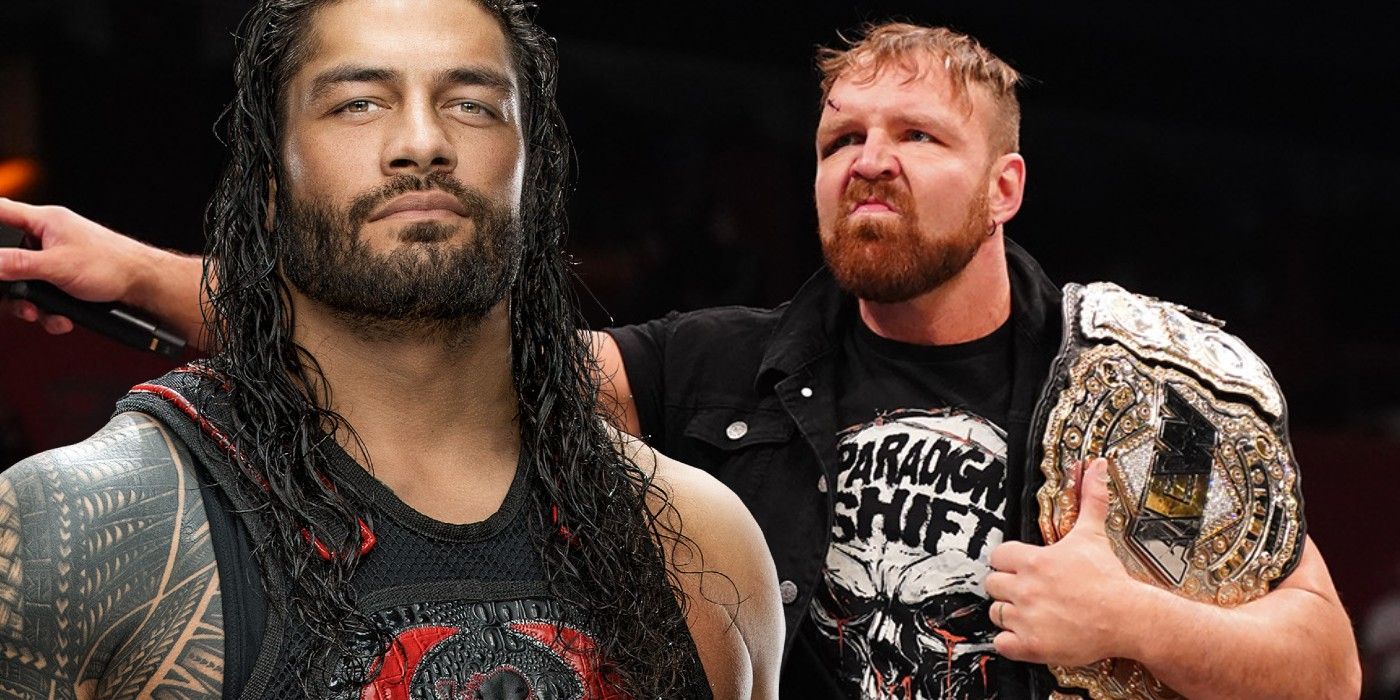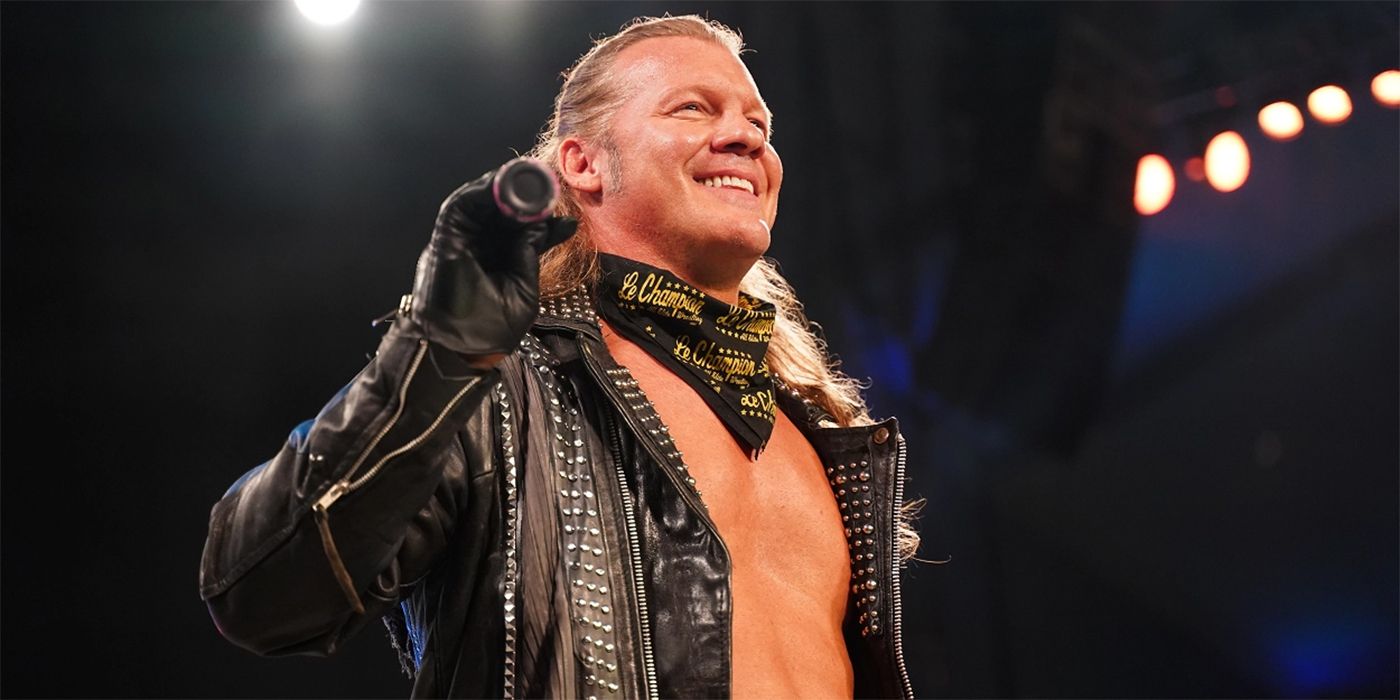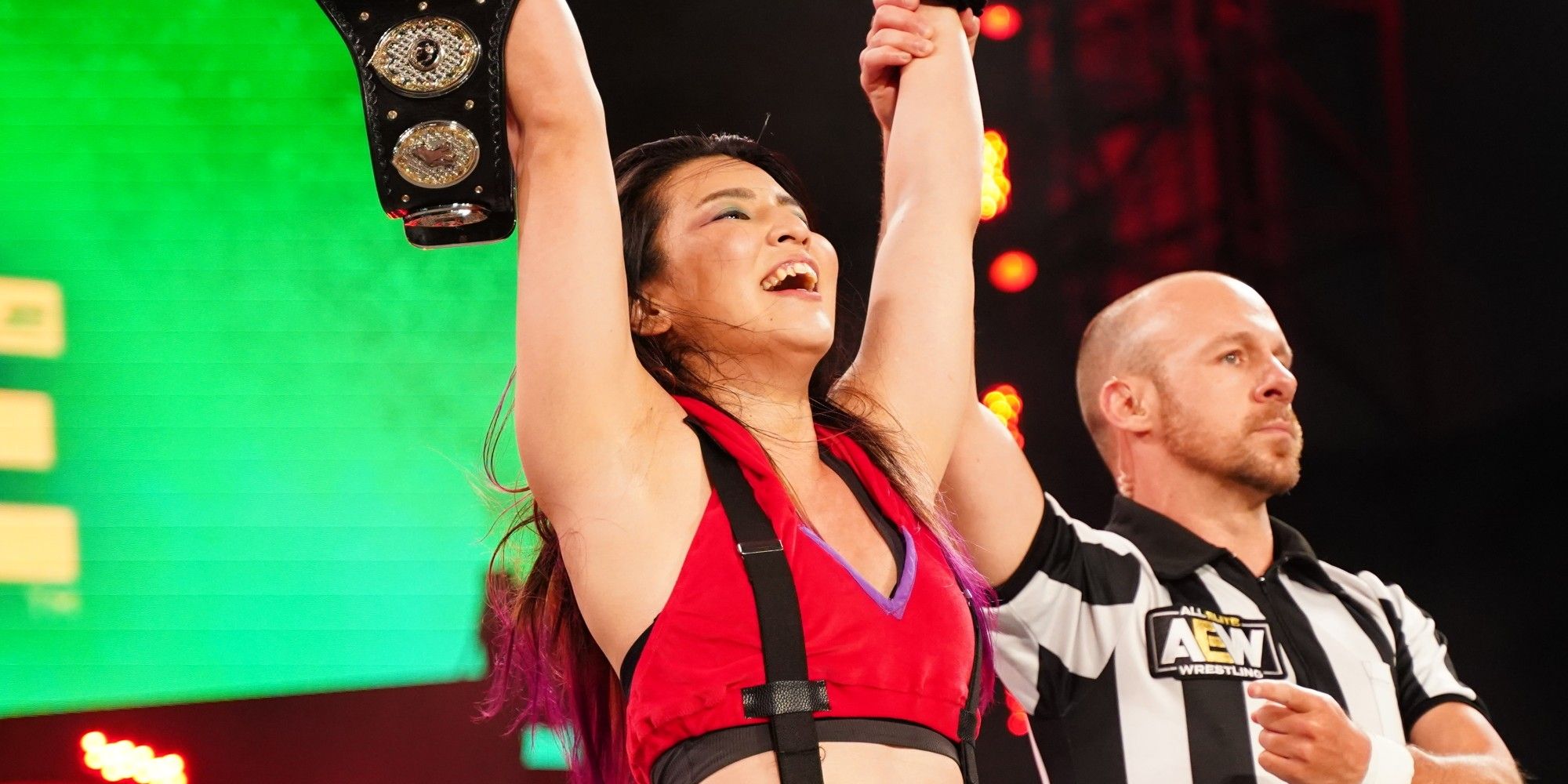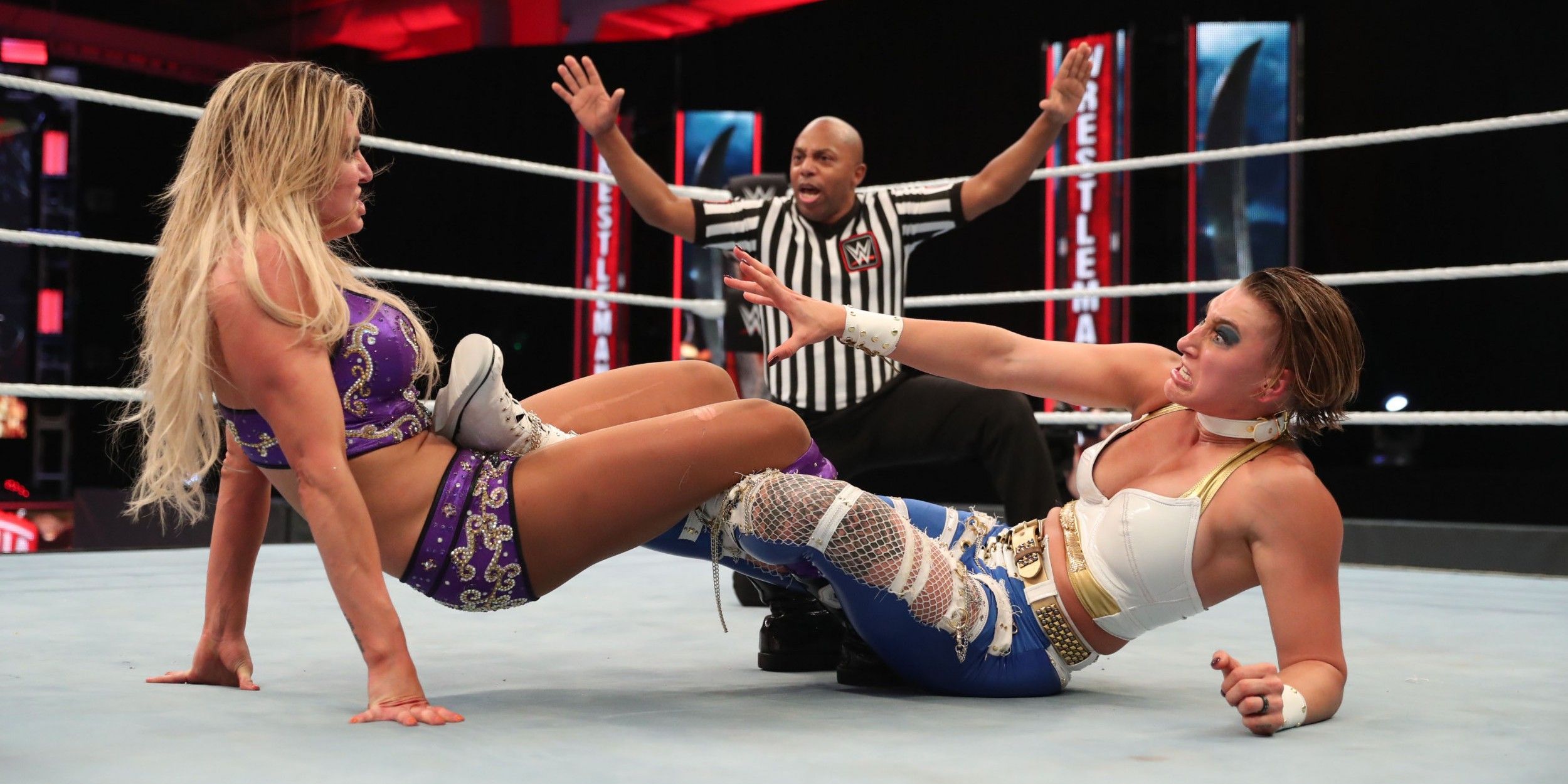AEW: Dynamite has enjoyed a successful, and certainly eventful, first year, but there are some kinks to iron out before WWE are toppled. Ever since the demise of WCW, the western wrestling landscape has been dominated by the bright, sports entertainment lights of WWE. The likes of TNA and Ring of Honor enjoyed sustained periods of success, but a long, long time passed before a genuine contender to Vince McMahon's kingdom emerged. Wrestling fans were keen for an alternative, and as WWE's product became more divisive in the 2010s, that hunger only intensified.
Enter All Elite Wrestling. After WWE's Cody Rhodes was given the "future endeavors" treatment, the second-generation grappler fell in with stars of the U.S. indie scene and NJPW such as The Young Bucks, Kenny Omega and Adam Page. Inspired by a tweet from Dave Meltzer, this coalition of modern wrestling heroes went All In at the Sears Center in 2018. The event was a runaway success in critical and commercial terms and led directly to the establishment of All Elite Wrestling, backed by the financial muscle of the Khan family.
AEW's weekly Dynamite show is now approaching its first anniversary and continues to rival WWE in a way no other company in recent memory has. And despite being faced with an unprecedented pandemic in its freshman year, AEW has continued to grow, extending their TV deal, releasing a line of action figures and regularly besting WWE's NXT in the ratings. Here's how AEW has changed the wrestling landscape, and the work still to do in the hunt to catch WWE.
The Reasons Behind AEW: Dynamite's First Year Success
Most would agree that AEW: Dynamite has done far more right than wrong in its debut year, and it's testament to the show's consistency that weak episodes are few and far between. One of Dynamite's biggest strengths is its ability to weave hit storylines without delving into the "sports entertainment" arena so closely associated with WWE. FTR's manipulation of "Hangman" Adam Page, Orange Cassidy's juicy feud with Chris Jericho, the reveal of the Exalted One - the past 12 months of AEW have been packed with fascinating stories that (mostly) stripped out the soap opera. Dynamite has thrown a few duds - the Nightmare Collective, for example - but have been quick to either drop angles that aren't working, or find a way to pull things around. While the pandemic has undoubtedly affected AEW's long-term plans, Dynamite has delivered moments that feel important even without an audience cheering in the background.
Another aspect of AEW: Dynamite difficult to find fault in is the wrestling action. WWE's in-ring product has long differed in style to the indies, but AEW leans far more in this direction. Generally speaking, AEW matches are more violent, more chaotic, and wrestled in a modern style, offering a refreshingly wild brand of weekly wrestling. The AEW tag division has been especially impressive over the past year, boasting a star-studded lineup of duos from SCU and Santana & Ortiz to The Young Bucks and FTR. Tag team matches on AEW: Dynamite have routinely delivered the goods, and the volatile title reign of Hangman and Omega was arguably the most compelling story of the company's mid-pandemic programming. That red-hot tag division has been underpinned by a series of strong singles runs, particularly in the AEW World Championship and TNT Championship title scenes.
Perhaps the most refreshing change AEW brings to the table, however, is the vastly different attitude and ethos. While some stars are certainly underused, AEW: Dynamite makes a concerted effort to highlight new stars and give opportunities to those who aren't TV regulars. Sonny Kiss, for example, spent the early part of 2020 largely absent from screens, but was afforded a TNT title match against Cody in July that raised Sonny's stock considerably. WWE often frustrates fans by building talents in NXT only to drop them on the main roster. AEW may not be using every employee to their full potential, but there's a clear directive to ensure every wrestler is given an opportunity and something to do.
What AEW: Dynamite Still Needs To Improve
Despite AEW: Dynamite's strong showing over the past year, the puzzle is not yet complete, and several areas require improvement if the fledgling company is to rival WWE's dominance in the long term. The roughest jewel in AEW's crown is the women's division. Although coronavirus caused problems across the board for AEW: Dynamite, the restrictions absolutely savaged the company's female contingent. Prior to COVID-19's interference, AEW was building new stars in international imports such as Yuka Sakazaki and Bea Priestley. Not only were these plans curtailed when the virus hit, but the likes of Riho, Shanna and Emi Sakura became unavailable due to travel restrictions, while Nylo Rose and Big Swole were also forced off-screen. In a case of incredibly bad timing, the onset of lockdown coincided with injuries to major talents Britt Baker and Kris Statlander, leaving AEW: Dynamite with only a handful of names in their women's division.
But AEW's female woes can't be attributed solely to bad lack and poor timing. When Dynamite began, hopes were high for the company's women's wrestling - AEW's progressive reputation promised a strong focus on female stars, and none other than Kenny Omega was put in charge of the division. Even before the pandemic, however, viewers were left unimpressed with the time afforded to female talent, and there has been little improvement in that area since. Many names might've been absent or injured, but women's matches that were booked during the pandemic proved woefully short, and it's no exaggeration to say that AEW: Dynamite's first year has been male-dominated.
AEW could also improve at the commentary table. Excalibur has been a revelation, taking to weekly TV like the proverbial Gobbledy Gooker to water, and Tony Schiavone has been a bright asset also. Jim Ross adds star power to the AEW: Dynamite commentary table, but his calls have also generated controversy. The regular name flubs can be attributed to Jim's mature years, but comments like "did Anna Jay have a wardrobe malfunction, or is that wishful thinking?" simply don't belong in 2020, especially in a company positioning itself as a modern alternative to the status quo. Had the line emanated from a WWE microphone, the uproar would've been unforgiving, and justifiably so. Veda Scott has made an impressive start to life on AEW Dark, hinting towards an improved commentary team in Dynamite's future.
AEW: Dynamite has certainly been a hotbed of intense action, but that rougher, indie style doesn't come without in-ring errors. Early episodes became notorious for non-existent tag rules that went beyond parody when partners were being tagged while inside the ring. The tag-team chaos has mercifully been fixed, but AEW's house style remains prone to relatively simple errors. In the past few weeks alone, Matt Hardy continued a match despite a serious head collision, Ivelisse was accused of no-selling during a match against Thunder Rosa, and Miro suffered a botch-filled debut after receiving a knock to the ankle. AEW: Dynamite's wild style has been a strength, but that creative freedom has also resulted in avoidable errors.
Controversially, AEW Year One has indulged in subtle (and no-so-subtle) jibes at WWE's expense. Some gags hit better than others, and almost all of them generated press, but as AEW Dynamite gets older, the time will come to call a ceasefire towards the opposition. From Cody's theme song to Miro's "brass ring" promo, the slew of jokes and prods aimed at Vince McMahon's house are a double-edged sword that might've worked while AEW was the plucky newcomer, but will inevitably lose their impact as time goes by.
Can AEW Catch WWE?
When AEW: Dynamite first hit screens in October 2019, the question on everybody's lips was whether or not these rowdy newcomers could compete on a level with the established brand of WWE. The past 12 months prove unequivocally that "paradigm shift" was no exaggeration. The "Wednesday Night Wars" ended before they really began, and AEW Dynamite recently rose to the 1 million mark after viewing figures looked to have plateaued - still some distance from WWE's Raw and Smackdown figures, but closer than many thought Dynamite would be after only a year in business. Wrestling as a whole is unlikely to see any significant viewership rises during the pandemic era, effectively pausing the race between AEW and WWE, but there's enough evidence to suggest that when normal service resumes, AEW could start to make ground.
AEW: Dynamite can confidently enter its second year with a "more of the same" approach. As future storylines garner mainstream attention (a revived Four Horsemen, perhaps?) and AEW makes new stars of Darby Allin, MJF, Eddie Kingston et al., the company's reputation and stock will surely increase. Solving the conundrum of AEW's women's division will go a long way towards improving Dynamite on a weekly basis, and address the one realm in which WWE are unquestionably superior. With a few tweaks and an end to the pandemic, AEW: Dynamite could find itself closer to Raw and Smackdown figures by the time its second anniversary arrives, putting pressure on WWE's main roster programming for the first time.




